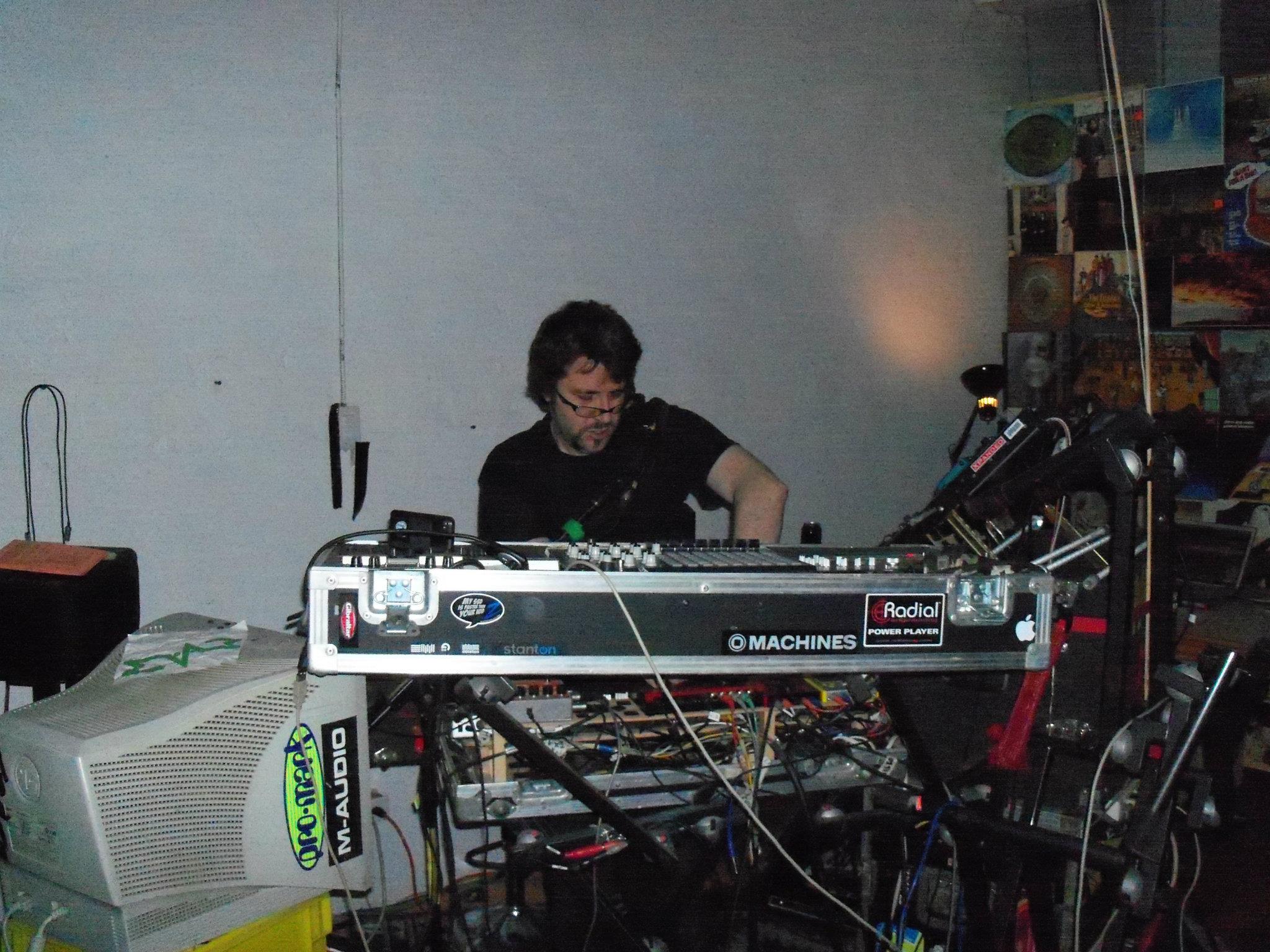Jarek has been using Splice for solo music production since early beta. He’s released some epic orchestral tracks as well as performance templates he uses for live shows along with the JazzMutant Lemur controllers. You can sign up for Splice, download his tracks to create your own version and learn more about his approach to music production. You can also learn more about Jarek’s influences and project “The Operator’s Concerto” here.
This blog post mentions Splice Studio, which is no longer active. Learn more about the shutdown here.
Splice: Can you tell us how you got started producing music?
Jarek: I started out as a HipHop scratch DJ many years ago. Over time I got bored of spinning music and was more interested in creating it. Although I still love to DJ, producing and performing with Ableton Live has now become my true passion.
I jumped on the EDM bandwagon in late 2008 under the moniker Lock//Stock and started trying to produce Electro and Dubstep. I wasn’t great at it. The sound design aspect of EDM production was extremely difficult for me. I understood how oscillators, filters, and effects work, but I could never get the sounds in my head to translate into the synths I was using in Ableton Live. Eventually this became so frustrating for me and it was keeping me from writing my music entirely.
In 2012, there were a couple of events that lead me to change the style of music that I was writing. The first was when photographer Trey Ratcliffe made a post of these amazing photos of Hans Zimmer’s studio on his blog. I always loved Zimmer’s movie scores and was blown away when I realized that he did most of his producing and arranging on a computer. Since film scores are largely orchestral, one can only imagine it being recoded by a large number of musicians playing classical instruments in a recording studio. Little did I know that this type of music could also be written on a computer. This inspired me to pick up the book “The Guide to MIDI Orchestration” by Paul Gilreath and after reading it I had made my switch from EDM production to Orchestral production. Right away I was writing arrangements that I loved and was spending more time writing music than obsessing over the details of one sound.
Splice: Can you tell us about this project, “The Operator’s Concerto”? How did it come about?
Jarek: The Operator’s Concerto is the overture for an album I’m working on titled Peace Through Strength. The album is a tribute to all of the “operators” working in conflict zones all over the world – an operator is a service member that is highly trained in special operations. Since I’ve spent a majority of the last ten years in Iraq and Afghanistan, war is one source of inspiration for my creativity. There are two versions of this project that I have uploaded to Splice right now. One is the arrangement with in-project mastering and the other is a live performance template. Opening either project will give a snapshot of how I produce, mix, master, and perform my music.
Splice: You are also performing live with 4 JazzMutant Lemurs and releasing templates on Splice. Can you tell us more about that? When did you get the Lemurs? How did you begin to incorporate them into your live setup? Do you use them in the studio as well?
Jarek: When I was trying to produce EDM my favorite groups were Daft Punk, Justice, and The Glitch Mob. The one thing these groups had in common, outside of electronic music, was that they all performed their music using Ableton Live and JazzMutant Lemurs and this inspired me to purchase them.
The Lemurs are essential to my studio and my performance workflow. In the studio I have a template that has a 88 key touchscreen keyboard with many assignable faders, knobs, and other devices. This allows me to play the melodies I want while being able to control things like pitch bend, breath, expression, volume, and other MIDI CC data in real time. This process makes it fun to write music as opposed to writing in all these parameters in by hand with a keyboard and mouse.
I don’t think I’d be able to perform the way I do with any other controller/software combo than the Lemurs and Ableton Live. In my performance template Ableton is sending out MIDI data to the Lemurs which automatically flips the interface pages to the proper instruments at the appropriate times.The Lemurs are also controlling my Ableton Live Samplers which hold the sounds for all the instruments that I choose to perform in the arrangement.
Splice: How has Splice changed or helped your workflow?
Jarek: Splice has dramatically changed my workflow in several ways. I remember when DJ Tech Tools did their first writeup on Splice, I knew right away it was going to change the way people produced and collaborated plus, having a backup of all my music is a huge stress reliever.
When it comes to collaborating Splice has eliminated the need to bounce or freeze tracks in the DAW. The community tab is my favorite feature of Splice because anyone can look at a project, listen to it, then splice it to explore the guts of the arrangement if they are curious. The ability to use the DNA Player to get an overview of the arrangement, view the plugins, the samples used and project size before you even download the project rocks on so many more levels than sites like SoundCloud, Indaba, and others.
Splice: Any new projects in the works?
Jarek: I had to go on a small hiatus form music due to work, school, and moving to Denver, CO. However, I’m getting all settled in and have about nine projects that I’ll be uploading to Splice as WIPs. The plan is to work and update them daily so that other members of the community can see how I write and perform music. All of this will be coming soon though as soon as I unpack and get my studio set up in my new apartment. I’m looking forward to sharing and collaborating more with the Splice community everyday.
March 6, 2015



